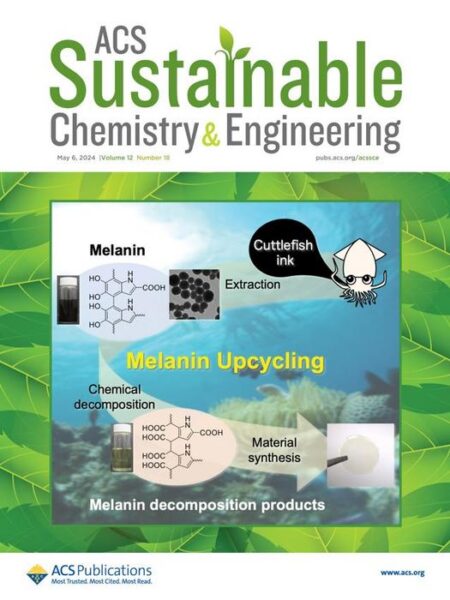Japanese researchers have discovered a promising new source for eco-friendly materials: melanin from cuttlefish ink. This abundant natural pigment could revolutionize the production of biodegradable plastics and other sustainable products, offering a potential solution to our growing environmental challenges.
From Seafood Waste to Valuable Resource
The study, published in ACS Sustainable Chemistry & Engineering, focuses on melanin as an underexplored biomass resource. While plant-based materials like cellulose have received significant attention, the potential of melanin has remained largely untapped.
Associate Professor Michinari Kohri from Chiba University, who led the research, explains the abundance of this resource: “From a resource perspective, the melanin concentrated in the ink sacs of cuttlefish and squid is easily recoverable natural melanin. The catch of squid and octopus has been increasing yearly and hovering around three million tons for the past few years.”
Breaking Down Nature’s Complex Polymer
The team first synthesized artificial melanin to use as a model for their experiments. They then conducted extensive decomposition tests on both the artificial melanin and natural melanin extracted from cuttlefish ink sacs.
Surprisingly, both types of melanin broke down into similar compounds – pyrrole derivatives containing carboxylic acids. This finding suggests that melanin from various sources, including insect exoskeletons and animal hair, could be equally valuable for chemical production.
To demonstrate the practical applications, the researchers used these decomposition products to create various polymer films and particles. Dr. Kohri highlights the environmental benefits: “Since melanin is naturally abundant biomass and eventually gets degraded by microorganisms, polymeric materials produced using melanin decomposition products are probably also biodegradable. Biodegradable polymers can be disposed of without harming the environment, and thus, the proposed approach for making polymers from melanin decomposition products could lead to the development of sustainable materials.”
This research opens up exciting possibilities for sustainable manufacturing. By upcycling a widely available natural resource like cuttlefish ink, we could potentially reduce our reliance on petroleum-based plastics and other environmentally harmful materials.
Dr. Kohri envisions a future where melanin plays a crucial role in sustainable chemistry: “Just as research on cellulose biomass has advanced because cellulose can be extracted from a variety of underutilized plants, we hope our efforts bolster the use of melanin as a biomass resource.”
As the world grapples with environmental challenges, innovative approaches like melanin upcycling offer a glimmer of hope. By turning waste products into valuable resources, we may be able to create a more circular and sustainable economy. The next time you order calamari, remember – that inky sauce could be the key to a greener future.
If our reporting has informed or inspired you, please consider making a donation. Every contribution, no matter the size, empowers us to continue delivering accurate, engaging, and trustworthy science and medical news. Independent journalism requires time, effort, and resources—your support ensures we can keep uncovering the stories that matter most to you.
Join us in making knowledge accessible and impactful. Thank you for standing with us!

